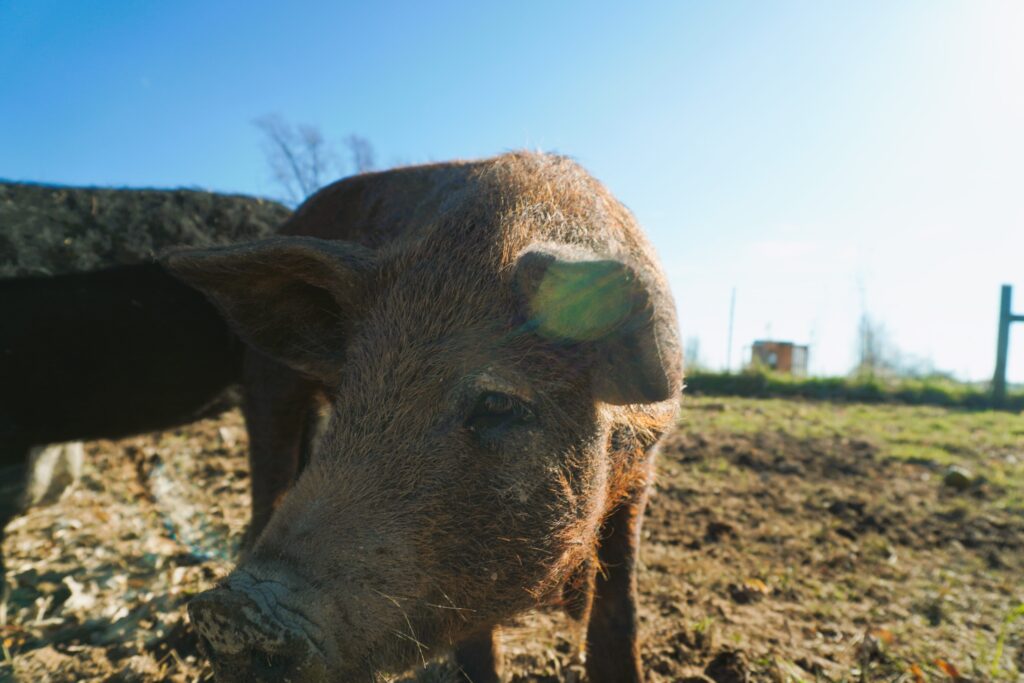
In this post I’m going to tell you how you can earn more money with pigs by turning a $75 feeder pig into a butcher hog worth at least $1,000.
I’ve heard multiple farmers say that pigs are often overlooked, in terms of profitability, because they require a lot of inputs, or feed, to become a marketable product. The large indoor hog facilities have done such a good job at driving down the price of pork that it’s just too hard to compete if you’re a small farmer. I’m here to tell you, that line of thinking is outdated.
When I was a kid, in the late 80’s and 90’s, my dad was like many other small farmers in my local area. He had a couple acres of ground that was dedicated to raising pigs. In those days, you could make pretty good money off of a group of feeder pigs. Demand was high, feed was cheap, and the large factory operations hadn’t yet taken over the industry.
However, as time went on the market crashed and many of the smaller operations were squeezed out. Of course, that was when the supermarkets were still strong and people weren’t as focused on where their food was coming from as they are today.
Over the last several years there has been a shift back toward small farm production and direct marketing of many farm products. Pork is definitely no exception. When COVID hit in 2020 there was a sharp increase in demand for farm raised pork. That brings us to the main point of this post.
Can you really make money with pigs and turn decent profit?
Well, in order to answer that question we’re going to have to do a look at some numbers and do a little math.
The Cost of Piglets
The first number I want to talk about is the cost of the pigs.
Whether you’re raising your own with a boar and a sow or buying feeder pigs, it’s going to cost you some money to get started. In the past, I’ve pretty much always bought feeder pigs because in my area the market tended to be heavier on the supply side of things than on the demand side. So, healthy feeders with good genetics could usually be had for only a couple dollars more than it would cost to farrow them yourself.
Now that’s not always the case for everyone, in fact things have really started to head in the opposite direction over the last couple years in my neck of the woods. Feeder pigs have been difficult to come by this year. I recently read that the average cost of a feeder pig is $75, so that’s the number we’re going to start with.
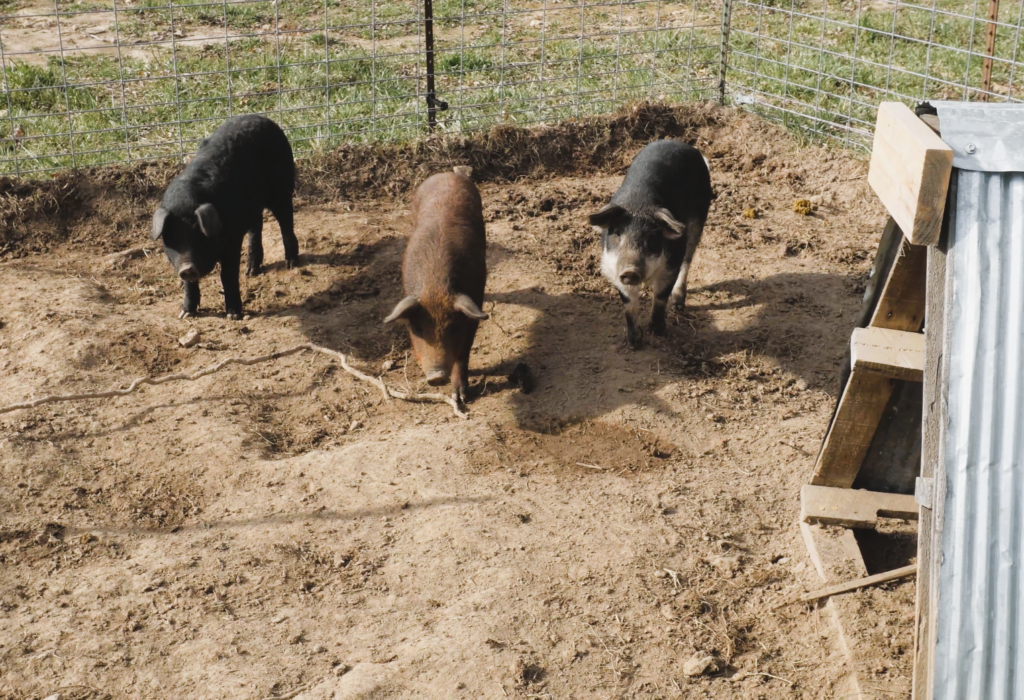
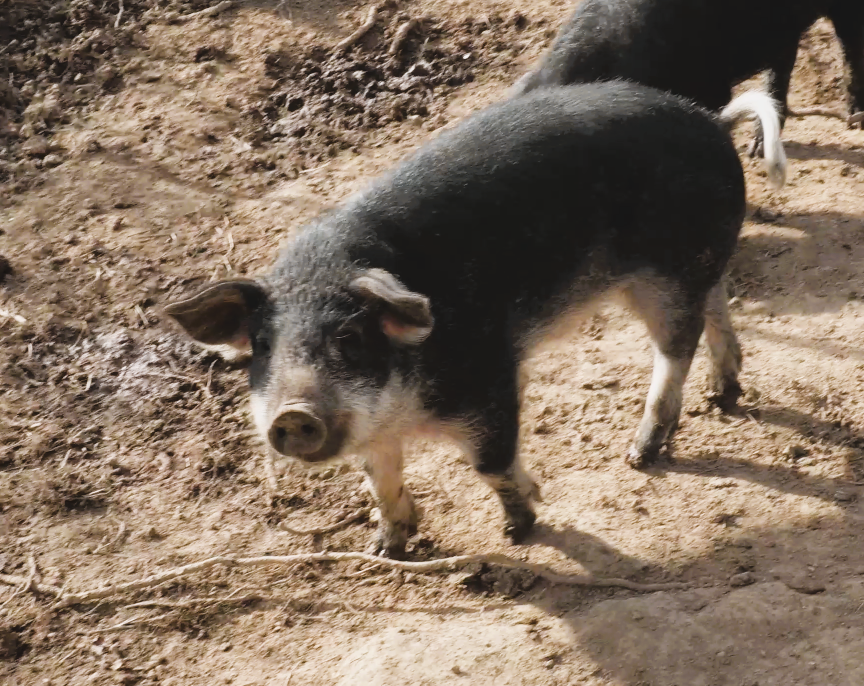
The Cost of Feed
Frankly, feed costs are usually the greatest variable when it comes to raising pigs because they tend to fluctuate quite a bit. Right now, my feed costs are $25 per hundred weight or $500 per ton. Now, if you have a place to store your feed, or even have a bulk feeder that is large enough to hold it all, you’ll probably be able to save a little bit if you buy your feed by the ton.
So, the big question when it comes to feed is, how much do I need to produce a market weight hog? Well, that depends. Don’t you hate it when people say that?
On average, the target feed conversion ratio should be about 3:1. That means that every 3lbs of feed consumed should produce 1lb of growth (or gain). Not every breed is going to do that.
Some grow slower than others, especially some of the older heritage breeds that are popular in pastured pork operations. That’s not a bad thing, however, because some of the slower growing breeds are desirable for what some consider to be greater quality, in terms of flavor.
In those cases, you can often charge a premium price because you are raising a premium product.
However, if you’re shoveling feed into your pigs and they don’t seem to be growing much, you might need to evaluate why you’re having a problem. Not all feeds are created equal. Get the best quality feed you can. Sometimes cheap feed comes with some hidden costs.
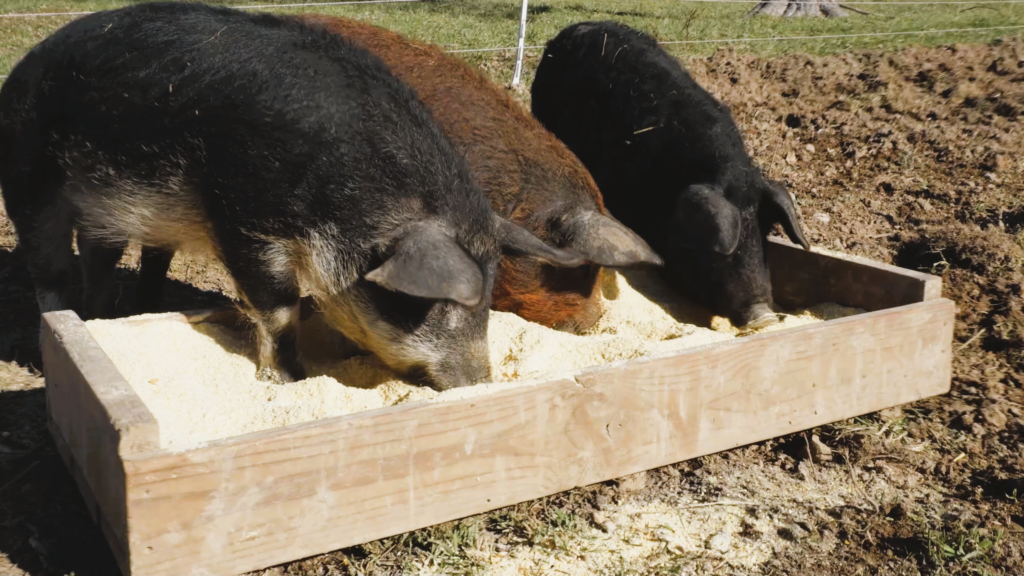
Feed requirements also depend on what you consider to be market weight. If your idea of a market weight pig is 300lbs, live weight, you’ll need more feed than someone who is looking for a 250lb hog.
For the sake of simplicity, we’re going to use averages. You can manipulate these figures however you need to in order to get figures that are more accurate for your situation. If you purchase a 50lb feeder pig that produces a 3:1 feed conversion ratio, you’ll need 600lbs of feed to get that pig to 250lbs. Again, that’s 200lbs of growth, or gain, multiplied by 3lbs of feed.
Next, you multiply that 600lbs of feed by the price of feed. I said before that my current feed cost is $25 per hundred, or 25 cents per pound. 600lbs of feed at 25 cents per pound is $150. Add that to the original cost of $75 to buy the feeder pig and we’re standing at $225, or 90 cents per pound.
Selling your Pork
This is where the real decision making begins. Do you want to sell the pig as a whole hog or by the half, to be delivered to the butcher?
In that case, the buyer often pays you when you deliver the animal to be processed. They will also pay the processing fees. Once that animal steps off of your trailer, it’s no longer your responsibility. In my area, there’s not much money to be made doing that. The top producers will get about $1.25 to $1.50 per pound, live weight for the pig. That means that a 250lb hog will have a sale price of $312-$375. That means that you’ll earn a max of $150 for your time and other related expenses such as transportation, water, equipment, etc.
If you plan to run that type of operation, volume is your best friend. The only way to make a substantial profit is to raise several pigs. The big question in those situations is, how many can you sell?
The other way to sell your pig is to have it processed at an inspected facility that will allow direct sales of individual cuts of meat.
This means you have to pay for processing, you have to be able to store the product, and sell it.
Usually this means having a decent size freezer, or freezers, and joining a local farmers market. My cost to have a pig processed at a USDA facility is as follows: $45 in fees, 85 cents per pound hanging weight (about 70-75 percent of the live weight), an additional 70 cents per pound for smoked and cured meats, and 50 cents per pound for sausage.
I’ve been told those numbers are very cheap compared to some other parts of the country.
So, you’ll have to do some investigating on what it would cost near you. The typical pig will yield about 75% of the carcass weight in retail cuts. So, a 250lb hog will produce a carcass weight around 180lb. Of that 180lb carcass, 135lbs will be packaged retail cuts.
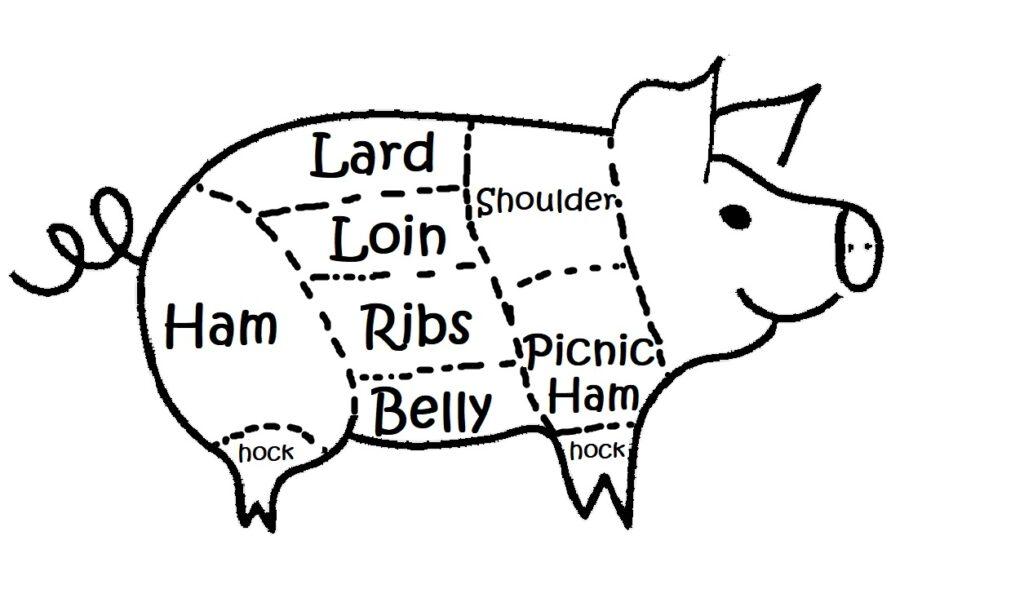
If you divide your original cost of $225 by that 135lbs, you will have a production cost of $1.67 per pound before processing expenses. For me a 250lb hog will yield about 50lbs of smoked and cured meats and 10lbs of sausage.
Using the numbers I gave before for processing, we have $45 in general fees, $153 for hanging weight processing, $35 for smoked and cured meats, and $5 for sausage. That gives us a total of $238 to process 135lbs of retail cuts.
When added with the production costs from before we have a total cost of $463 or $3.42 per pound for a product that is ready for sale.
So the big question is, “How do you turn a $75 feeder pig into a butcher hog worth at least $1,000?”
To get $1,000 ($537 gross profit) out of that pig, you’ll need to sell your cuts for an average of $7.41 per pound.
The USDA puts out a monthly market report of pastured pork prices. At the time of this post, the market report shows that the cheapest cut sold direct to consumers is selling at an average price $7.94 per pound.
That was ground pork.
The most expensive cut, tenderloin, is selling at an average price of $16.25 per pound.
It is quite possible that if you are in the right market, you could actually be selling your pork for well over that $1,000 figure. In fact, you could be talking about a gross profit of $1,000.
I don’t know about you, but around here that’s a pretty good return on what started out as a $75 feeder pig. If you have any questions or comments please be sure to post them below.
